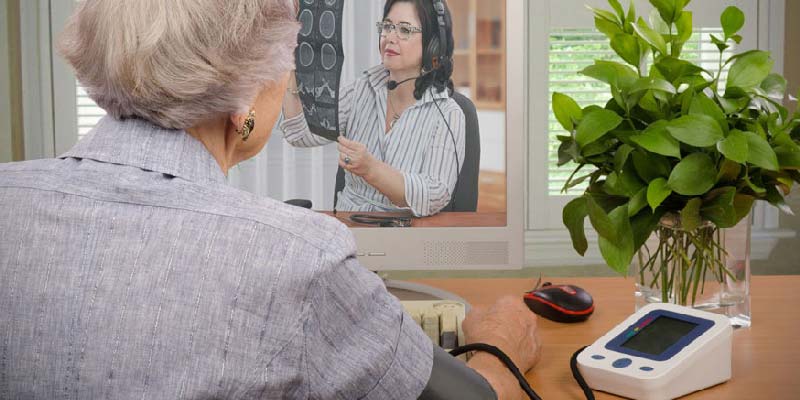Advancements in medical technology have defined the practice of healthcare since a concept of healthcare has existed, from bandages to penicillin to MRIs. Today, we think of technology as digital, and it has permeated practically every aspect of our lives. It’s natural, therefore, that some of the biggest news in healthcare is related to technology and access. The tech that we use every day--our phones, the internet, computers--is transforming how people think about and receive healthcare, making it more convenient and accessible overall.
Telemedicine
One of the most talked-about trends in healthcare access today is telemedicine, which is the use of devices connected to the internet to provide clinical services. Originally, the goal of telemedicine was to make healthcare more accessible in rural regions of the United States, but after numerous studies showed these efforts to be hugely beneficial to both patients and healthcare professionals, healthcare technology companies began to develop more and more applications for telemedicine.
Telemedicine has vastly improved patient care capabilities for inpatient healthcare facilities such as small hospitals and for increasing access to specialists, who may not always be on-premises when they’re needed. A recent study from the CHEST Journal reported a reduction in patient transfers in intensive care units (ICUs) that had telemedicine systems in place, buying valuable time and providing specialized care that would have otherwise required a transfer.
The more highly discussed and visual aspect of telemedicine is the rise of applications and services that allow primary care physicians, psychologists, pediatricians, and more to examine patients without either person ever setting foot in an office. Doctor shortages around the country have made wait times for appointments longer, forcing sick people in highly-populated and rural areas alike to either pay high bills for urgent care or forgo a doctor visit altogether. Telemedicine has excelled at providing care for minor but time-sensitive health issues such as ear infections and stomach problems, meaning more convenience at a lower cost.
Healthcare Portals
Not only are physicians and other healthcare professionals becoming more accessible, but personal health information, billing, and care instructions have also become easier to find thanks to electronic health records and healthcare portals. Before electronic health records, or EHRs, patients had to request physical copies from their healthcare providers’ offices, an inconvenient process that meant that most people only received their records when they were absolutely required.
Today, practices from primary care physicians to hospitals are making EHRs easily accessible through online patient portals. Visibility into personal healthcare records empowers people to be more active in their healthcare. In addition, some patient portals have other functions, such as a form of telemedicine where patients can ask their care providers questions on a secure platform, or billing statements that people can reference whenever they need to. This increased visibility into the process of healthcare offers people both convenience and insight, giving them the knowledge to make informed decisions about their health.
Personal and Remote Monitoring
About 45% of adults in the United States are living with at least one chronic disease; for seniors alone, that number rises to almost 80%. Managing chronic diseases such as diabetes, heart disease, and dementia is a constant part of everyday life, and for many people, chronic conditions mean more frequent visits to doctors and specialists. Healthcare appointments can be stressful for anyone, but for people with limited mobility or debilitating pain, they can be close to impossible.
Today, connected devices such as blood pressure and glucose monitoring devices make it easy to track health conditions and determine when intervention is necessary. Devices for home use are usually designed to be easy-to-use and offer clear insights in order to be as useful as possible to patients and caregivers. Some, such as heart rate monitors built into smartwatches and fitness trackers, are even wearable.
The ability to connect to the internet also means that remote monitoring is possible. Remote monitoring allows healthcare professionals to track a patient’s biometrics, rather than the patient tracking their condition themselves. While this may seem somewhat invasive, it is a real boon for people with serious conditions, or those who live alone or in an isolated area. Early detection of problems can help patients get the attention they need, sometimes even before they realize they need it.
Technology has always been integral to healthcare, but now, convenient healthcare technology is accessible to everybody. Services such as telemedicine and remote monitoring are still relatively new, and studies are still being done on the long-term benefits and drawbacks, but improvements to healthcare accessibility are ensuring better health for people all over the country.





